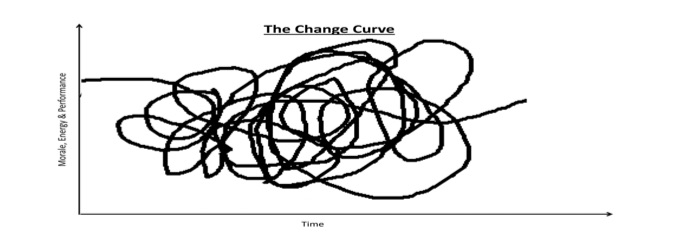Or not.
There is a lot of talk about moving out of lockdown and into the new norm, but what does that mean and is it even something we want?
If we think about the definition of the word “normal”, it regards conforming to a standard, usual, typical, or expected… a kind of status quo. While there are some areas where this might be desired, like a routine trip to the dentist or being able to get your favorite meal at your regular hangout spot, isn’t the draw of being an entrepreneur to be free from these constraints? To, rather, write your own guidelines and be a forward-thinking anomaly?
So perhaps, rather than thinking of coming out of lockdown and looking to drop into any normal status quo, this is a time to use the current system breakdown as an invitation to re-write a far better approach. An approach that is written by you, for you, and for a far better world. Of course, there will be inevitable constraints and problems; it’s what we do when we face them that makes the difference.
Without doubt, we have all undergone, and continue to go through, varying degrees of change and adaptation. There is always change and adaptation. Perhaps, not quite on the scale of the current times, but ongoing nonetheless.
The question then is this: how well do you navigate change?
One thing that the COVID-19 pandemic has undoubtedly highlighted is that the classic change curve is something we all navigate in our own unique way. Mostly, the change curve perhaps looks more like this…
No matter where you are in the change curve or how your own personal journey through change looks, here are 3 keys that will help you to navigate it:
1) Manage your internal state
With so much emphasis on all the doing we do, the state from which we are doing all of the doing is sometimes overlooked. It shouldn’t be. Learning to be steady in the eye of any storm affects every thought, word, choice, and action you take. It is the difference between knee-jerk, fear-based reactivity and considered bigger-picture responses. Managing your internal state allows you to problem-solve from expanded awareness and thinking. It enables you to stay resilient and adaptive.
If you don’t have a regular mindfulness, meditation, or breath practice yet, then maybe now is the time to try one. Even just 10 minutes of daily practice can make a difference. It can be life-changing—and isn’t that what we want right now? Please don’t take my word for it though; I’m a great believer in finding out the evidence of whether something works for you or not by trying it and making your own mind up. Just keep in mind that a one-off practice here or there is unlikely to make lasting, significant difference.
2) Navigate challenges and problems with a solution-orientated mindset
That sounds obvious, but sometimes we get stuck looking at the problem and get held up by our resistance to it being there. Challenges and problems are a part of life—it’s how we navigate them that makes the difference. Whenever you face a challenge or problem, try this simple approach:
- Identify and accept the situation, problem, or challenge as it is.
- Identify what’s in your control & what isn’t.
- Identify the solution you would like to work towards.
Then direct your focus and energy to the solution and ask yourself:
- What can I do?
- What do I need to find out, learn, or up-skill?
- Who can I ask or who do I need to speak to?
- What’s the very next step to take?
3) Effective communication
The bridge between our internal world and our external world is communication. It’s the bridge between each other and all that we do. The quality of communication can be a cause of many breakthroughs and many breakdowns. Here are some top tips for communicating effectively:
✅ Think about the right medium to use. Is it something best said in an in-person conversation, phone or video call, or written?
✅ Get fully present and breathe.
✅ Communicate honestly, openly, and respectfully…as best you can.
✅ Have the conversation at an appropriate time and place. Get comfortable re-scheduling a conversation if needed. If a conversation is worth having, then it’s worth having well.
✅ Set the intention to understand and be understood. This helps move past the block of there needing to be a right/wrong and helps to move towards a solution. Notice if your inner-dialogue is getting in the way of you listening in a nonjudgemental way. You don’t have to agree with what you’re hearing or reading; you’re just trying to understand.
✅ Slow down and listen. This is especially important during awkward conversations; because they can feel uncomfortable, it can be tempting to rush them, which can get in the way of understanding. Breathe. It’s a conversation that needs having, so give it the time it deserves.
✅ Clear up uncertainty by asking clarifying questions and repeating back what you think you’ve understood.
✅ Know the takeaway. Is there something to action? Is a follow-up conversation needed?
Conclusion
As you navigate your own way through whatever the future brings, balance managing your internal world with all that you are being and doing in the external world and know that effective communication is a skill well-worth learning.
Find a Home-Based Business to Start-Up >>> Hundreds of Business Listings.



















































